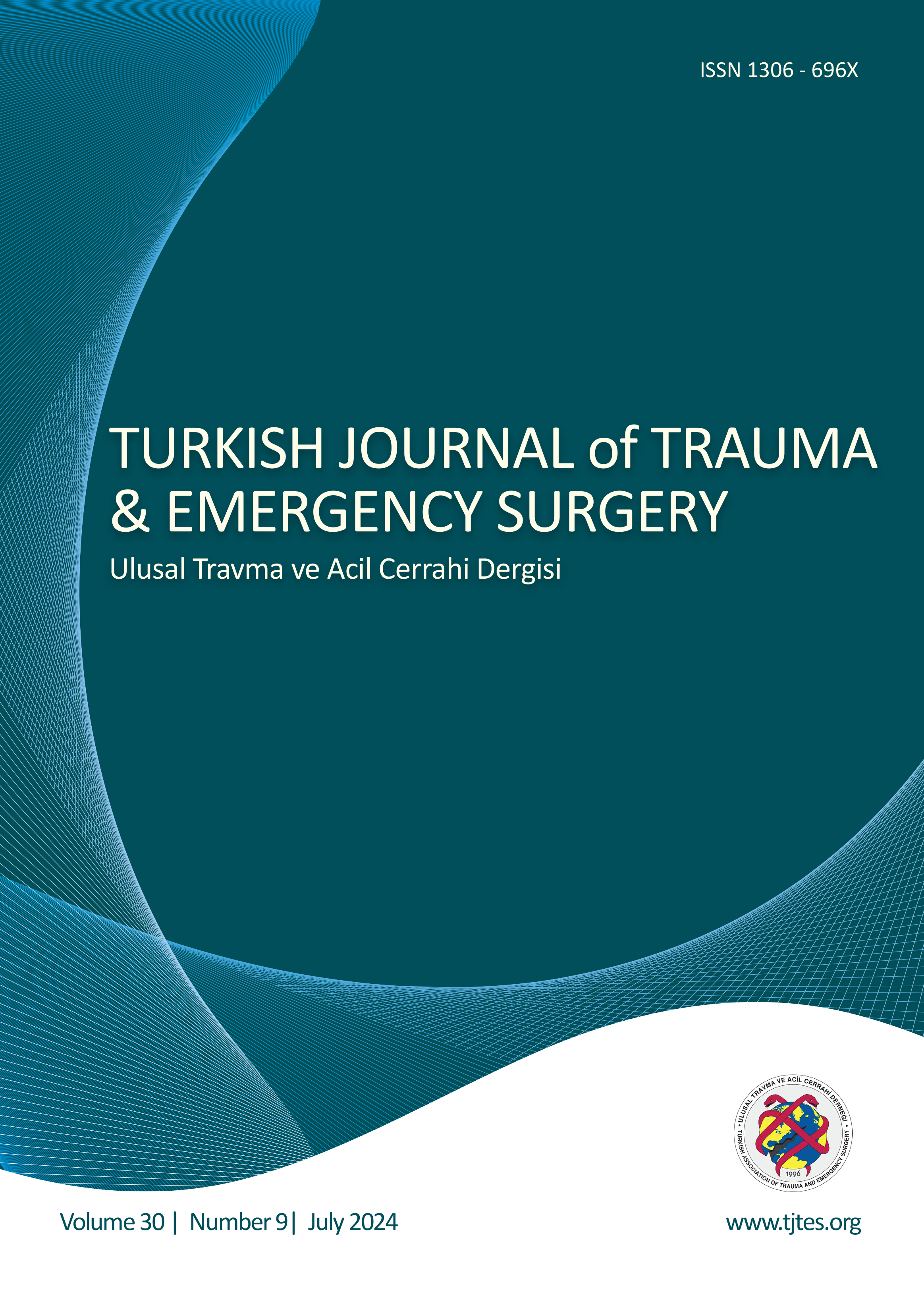Quick Search
Mortality risk factors for crush syndrome after an earthquake in Türkiye: Do systemic inflammatory parameters play any role?
Mediha Türktan1, Ömer Doğan1, Mehmet Gökhan Gök1, Kaniye Aydın2, Ersel Güleç1, Zehra Hatipoğlu1, Yusuf Kemal Arslan3, Dilek Özcengiz11Department of Anesthesiology and Reanimation, Cukurova University Faculty of Medicine, Adana-Türkiye2Department of Internal Medicine, Cukurova University Faculty of Medicine, Adana, Türkiye -Türkiye
3Department of Biostatistic, Cukurova University Faculty of Medicine, Adana, Türkiye -Türkiye
BACKGROUND: The aim of our study is to assess the prognostic impact of the neutrophil-to-lymphocyte ratio (NLR), lymphocyte-to-monocyte ratio (LMR), and platelet-to-lymphocyte ratio (PLR) on 28-day mortality in patients admitted to the intensive care unit with crush syndrome following the Kahramanmaraş earthquake in Türkiye.
METHODS: A total of 63 adult patients with crush syndrome admitted to the intensive care unit after the earthquake were enrolled in this study. The medical records of the patients were examined using follow-up forms and the hospital data system.
RESULTS: The mean age of the patients was 38.9±17.3 years, and the median time under debris was 31.5 hours. The 28-day mortality rate was 27%. In univariate generalized estimating equations (GEE) and other analyses, variables that are significant (or candidate variables) between 28-day mortality groups included age as a biological factor. These variables were included in the multivariate GEE model. The effects of continuous renal replacement therapy (CRRT), serum sodium concentration, Sequential Organ Failure Assessment (SOFA) score, and PLR on mortality were statistically significant.
CONCLUSION: Elevated SOFA scores, the necessity for CRRT, increased serum sodium levels, and decreased PLR values are associated with increased 28-day mortality in patients with crush syndrome after an earthquake.
Keywords: Crush syndrome, earthquake monocyte-to-lymphocyte ratio; neutrophil-to-lymphocyte ratio; platelet-to-lymphocyte ratio.
Türkiye'de deprem sonrası ezilme sendromu için mortalite risk faktörleri: Sistemik inflamatuvar parametrelerin herhangi bir rolü var mı?
Mediha Türktan1, Ömer Doğan1, Mehmet Gökhan Gök1, Kaniye Aydın2, Ersel Güleç1, Zehra Hatipoğlu1, Yusuf Kemal Arslan3, Dilek Özcengiz11Çukurova Üniversitesi Tıp Fakültesi, Anesteziyoloji ve Reanimasyon Anabilim Dalı, Adana, Türkiye2Çukurova Üniversitesi Tıp Fakültesi, İç Hastalıkları Anabilim Dalı, Adana, Türkiye
3Çukurova Üniversitesi Tıp Fakültesi, Biyoistatistik Anabilim Dalı, Adana, Türkiye
AMAÇ: Çalışmamızın amacı, Türkiye'de Kahramanmaraş depremi sonrası yoğun bakımda takip edilen crush sendromu tanılı hastalarda nötrofil-lenfosit oranı (NLR), lenfosit-monosit oranı (LMR) ve trombosit-lenfosit oranının (PLR) 28 günlük mortalite üzerindeki prognostik etkisini değerlendirmektir.
GEREÇ VE YÖNTEM: Bu çalışmaya deprem sonrası crush sendromu tanısıyla yoğun bakım ünitesine yatırılan toplam 63 yetişkin hasta dahil edildi. Hastaların tıbbi kayıtları takip formları ve hastane veri sistemi kullanılarak incelendi.
BULGULAR: Hastaların ortalama yaşı 38.9±17.3 yıl ve enkaz altında geçen ortanca süre 31.5 saat idi. 28 günlük mortalite oranı %27 idi. Tek değişkenli genelleştirilmiş tahmin denklemleri (GEE) veya diğer analizlerde, 28 günlük mortalite grupları arasında anlamlı bulunan değişkenler (veya aday değişkenler) ve biyolojik bir faktör olarak yaş, çok değişkenli GEE modeline dahil edildi. Sürekli renal replasman tedavisi (CRRT), serum sodyum konsantrasyonu, sıralı organ yetmezliği değerlendirme (SOFA) skoru ve PLR'nin mortalite üzerindeki etkisi istatistiksel olarak anlamlıydı. SONUÇ: Yüksek SOFA skorları, CRRT gerekliliği, artmış serum sodyum seviyeleri, ve azalmış PLR değerleri deprem sonrası crush sendromu tanılı hastalarda 28 günlük mortaliteyi artırmaktadır.
Anahtar Kelimeler: Crush sendromu, deprem; nötrofil-lenfosit oranı; monosit-lenfosit oranı; trombosit-lenfosit oranı.
Manuscript Language: English




